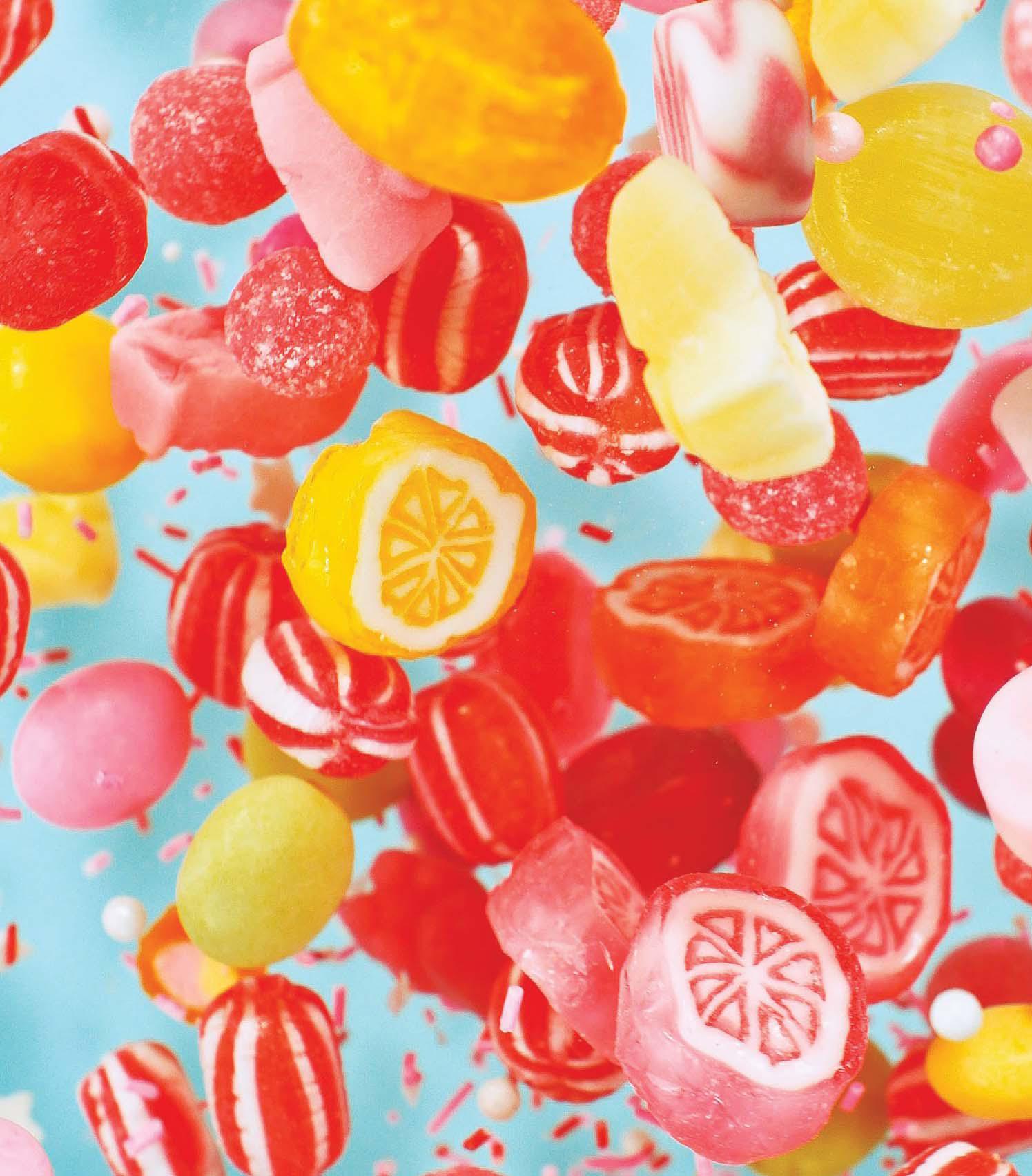
Imagine you’re walking down the sweet aisle at your local grocery store. You see flying saucers, sour gummies, Maltesers, Mars bars and so much more. Sure, at first glance – and bite – these sweets may taste, look, smell and feel different, but if you boil them all down (literally) they all have the same base ingredient: sugar. It is only when sugar mixes with science that it shapeshifts into your favourite sweets. So how are different candies made? Why do you crave them? Who is hard at work making the world taste so good? Let’s dive into the wild world of sweets to find out.
Candy chemistry
Candy-making is a lesson in chemistry – a type of science that studies how substances change when they react with each other. To make different sweets, candy makers (also known as “food engineers”) combine sugar, water and other ingredients – flavourings and gelatins (substances that form a stiff jelly) – and then bring them to a boil. Boiling the mixture causes a chemical reaction that changes the structure of sugar. Once that happens, the sugar mixture is ready to be cooled. It is the cooling process that determines what form the sugar will take. All candy can be sorted into two categories: crystalline or non-crystalline. Crystalline candies are continuously stirred as they cool, which makes smooth, easy-to chew sweets like fudge. Non-crystalline candies are usually more brittle-like sticks of rock and lollipops. The mixture is boiled at a much higher temperature, which gives it a hard glassy texture.
Sweet school
This story is from the Issue 74 edition of The Week Junior Science+Nature UK.
Start your 7-day Magzter GOLD free trial to access thousands of curated premium stories, and 9,000+ magazines and newspapers.
Already a subscriber ? Sign In
This story is from the Issue 74 edition of The Week Junior Science+Nature UK.
Start your 7-day Magzter GOLD free trial to access thousands of curated premium stories, and 9,000+ magazines and newspapers.
Already a subscriber? Sign In

Are cats smarter than dogs?
They're the UK's top pets, but which is more intelligent? You decide!

Could people turn Mars into another Earth?
Sven Bilén explores how humans might make a home on another world.

FUNNY BY NATURE
Claire Karwowski tracks down the wackiest wildlife that's cracking up the animal kingdom.

WEIRD SCIENCE
A round-up of the strangest science stories from around the world.

Guardians of the forest
Meet the incredible people protecting the Amazon rainforest.

The Mariana Trench
Dive in to find out how far down the ocean goes and what it's really like at the bottom.

Megan McCubbin
Meet the zoologist trying to change people's views of animals with a bad rep.

MAX POWER
From the second you wake up in the morning, your way of life is made possible thanks to the amazing power of electricity.

Your heart has a "brain"
New research by scientists at Sweden, and Columbia University, in the US, suggests that your heart could have its own \"mini brain\".

Ethiopian wolves could be furry pollinators
Sweet-toothed Ethiopian wolves have been seen lapping up nectar have been seen happing up nectar from red hot poker flowers.